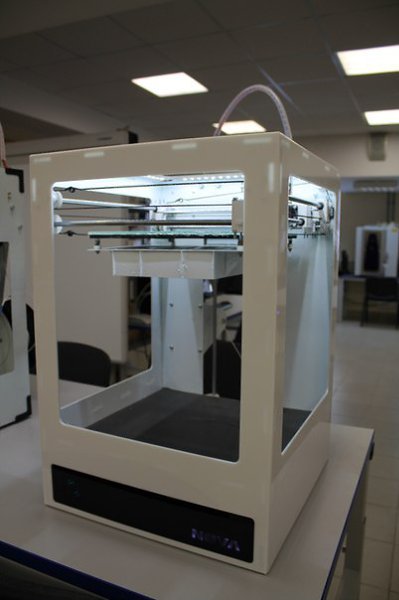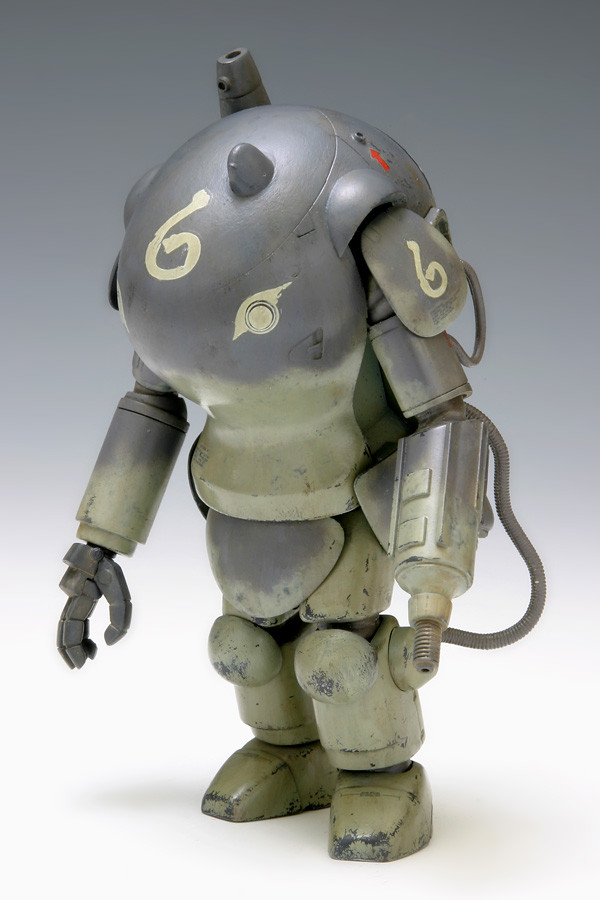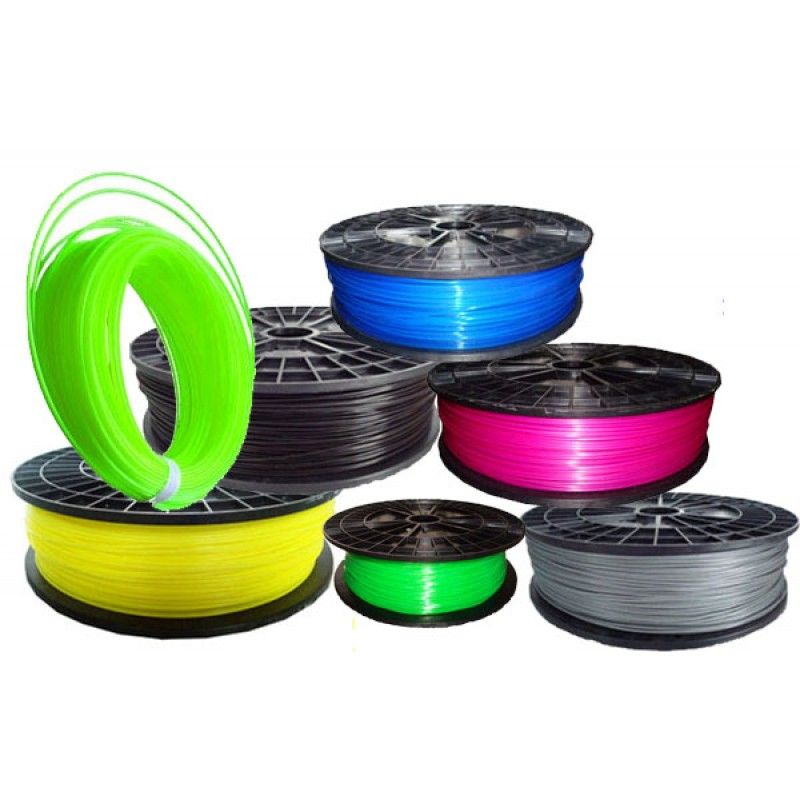3D printer base tape
Blue Tape for 3D Printing: The Complete Guide [2021]
3D Printing has rapidly grown in popularity and accessibility. What used to only be possible in advanced laboratories is now possible in the comfort of the home!
Whatever your purpose for 3D printing, whether professionally or just for fun, there are many components that play into the quality of the final product. One of the most important is bed adhesion.
Here is the ultimate guide to 3D printing with blue painters tape.
3D Printing Bed AdhesionWhat is 3D printing bed adhesion?Bed adhesion in 3D printing is how well the printed plastic parts are able to stick to the build plate. Good bed adhesion means that the plastic will not be easily removed or nudged, while poor bed adhesion means that it might move around during the printing process.
Essentially, as the filament hardens on the build plate, bed adhesion is what keeps everything in place. If the plastic pieces become top-heavy or get bumped, adhesion to the build plate is what keeps everything in place.
Bed adhesion is an important part of the 3D printing process. Luckily, there are special products designed to create the perfect amount of bed adhesion. Here are the reasons why bed adhesion is so crucial in 3D printing.
Not enough adhesion
If the 3D printed parts are loose enough to move around during the printing process, it can ruin the entire build. 3D printing requires exact measurements, so any sort of movement can misalign the entire build.
Too much adhesion
Alternatively, if the build plate has too much adhesion, it can be difficult to remove the plastic components. Any particularly thin pieces can potentially become damaged by the greater force required to remove them from the adhesion.
What kind of adhesives are used for 3D printing?Options for 3D Printing Bed Adhesion
PEI Sheets
PEI sheets, or Polyetherimide sheets, are adhesive plastic sheets designed to withstand the cycles of heat in 3D printing. On one side, they adhere to the build plate, and on the other they allow you to build your 3D prints.
On one side, they adhere to the build plate, and on the other they allow you to build your 3D prints.
While are supposed to be reusable for up to a month, the soft plastic can be dented and damaged very easily. A build plate that isn’t perfectly level can ruin a print. Investing in a PEI sheet can be risky because if it is damaged during an early print, the sheet can become unusable.
Adhesive Spray
Another option for bed adhesion is adhesive sprays. You simply spray the adhesive onto the plate and start printing. This route is easy and allows you to maintain a level bed. Plus, cleaning up is simple too, as most sprays are soluble in water.
Even though this is certainly a convenient method of getting your prints to stick, it is not the most effective. Getting an even stickiness to the bed with a spray can be difficult, and often it can be hard to get the bed to be sticky enough.
Glue
Using a glue stick is a way to keep your prints in place during 3D printing.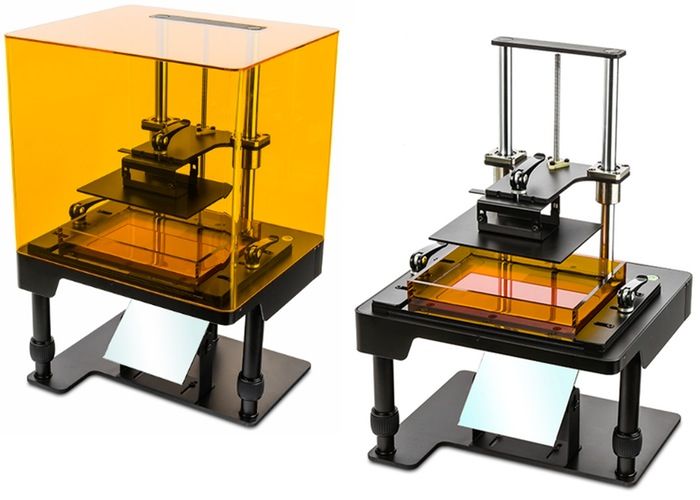 Special glue designed for 3D printing is available at a relatively low cost. All you have to do is rub the glue stick where you are going to be printing, and the printer will take care of the rest.
Special glue designed for 3D printing is available at a relatively low cost. All you have to do is rub the glue stick where you are going to be printing, and the printer will take care of the rest.
However, like PEI sheets, they can create an unlevel bed. If too much glue builds up in one spot, the print can become crooked. Also, clean up can be kind of a pain because the glue will stick to the plate and the print.
Blue Painter’s Tape
Specialized blue painter’s tape is a great option for creating bed adhesion. The porous nature of the blue tape allows PLA nylon, and other filaments to stick directly to the back of the tape. Painter’s tape is also heat resistant so it can withstand heated beds and the heat of the filament.
While it does take some set up, the price of the supplies and the quality of the printed parts are unmatched.
How to Use Blue Tape for 3D PrintingClean the Surface
Before you start applying the tape, you should clean your printing bed of all residue. This lets the tape stick and helps to keep your plate level.
This lets the tape stick and helps to keep your plate level.
Taping a 3D Printer Bed
While it will take a few minutes to properly tape your build plate, the prep work is not too difficult and can quickly be mastered.
With the adhesive side down, lay the tape down side by side. You want to be as precise as possible with this step so that there are no gaps that could let the filament through, but you also do not want any overlap of the tape which would cause the surface to be uneven.
Tape Diagonally
A key tip for taping a build plate is to lay the pieces of tape diagonally. When laying out the pieces side by side, start from one corner at a forty-five degree angle and work your way over.
This is helpful because it keeps the tape from warping with the print. If the straight edges of the print line up with the straight edges of the tape, the tape can lift off the plate as the filament cools.
Remove Bubbles with a Scraper
As you lay the pieces of tape down, be sure that there are no bubbles underneath the tape. To ensure this, run a scraper over every piece as you place it.
To ensure this, run a scraper over every piece as you place it.
You want to be gentle so that you do not damage or tear the tape, but you must be firm enough to remove any imperfections. If there is a piece of tape that becomes unusable, tear it off and try again; it is better to waste one piece of tape than an entire print!
Trim the Tape
When sizing up the strip of tape, pull it so it is longer than the width of the plate. Then when placing it, be sure to leave plenty of slack on either side of the plate. With a sharp razor, carefully slice the ends of the tape so it is flush with the sides of the plate.
If you don’t have a razor, it is also an option to wrap the excess tape underneath the bottom of the plate. However, this can affect the leveling of the build plate.
Avoid Touching the Top of the Tape
During this whole process of taping your build plate, try to touch the top of the tape as little as possible. The oils in your fingers can affect the porousness of the tape.
The oils in your fingers can affect the porousness of the tape.
If you are trying to print onto tape that you have been touching a lot, the oils from your hands may keep your parts from adhering to the tape. It is not so impactful that you need to wear gloves to place the tape, but just keep your contact to the tape at a minimum.
Preparing the Surface of the Tape
Once you have your blue painter’s tape on the build plate, there are various ways you can prepare the surface of your tape. Depending on what kind of adhesion you are looking for, you can use different methods for your own work.
You want to find the best balance between adhesion and clean removals that you can. If it has too much grip, the parts will not be easily removed. This could rip the tape or damage the parts. Too little adhesion will keep the printed parts from staying in place.
Unprepped Blue Tape
Leaving the blue tape untreated is a viable way to get adhesion. The porous nature of the tape allows the filament to attach itself, keeping your printed parts in place.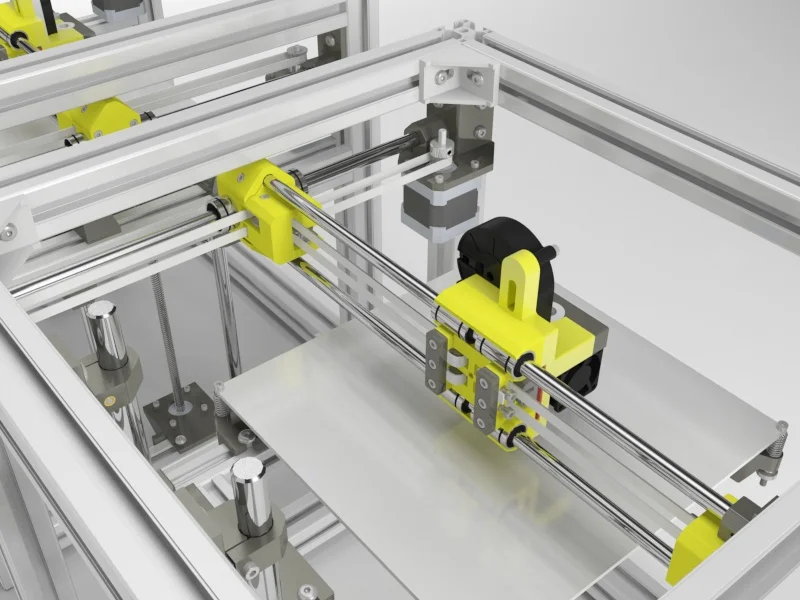
This method of adhesion should give you extremely clean removals. However, for prints that are top-heavy or unbalanced, you may need more adhesion to keep them steady and attached.
Scuffed Blue Tape
A simple trick you can use to add more adhesion to your blue tape is to scuff up the surface. Just take a dry sponge and rub-down the spot that you want to add adhesion to. By doing this, you increase the porousness of the tape, allowing the filament to stick to it even more.
This increases the adhesion of the tape, but it still allows for very clean removal of printed parts. The downside is, it will limit the lifespan of your tape. If you continue scuffing the same spot print after print, the tape will become worn down more quickly and will stop giving you quality results.
Glue on Blue Tape
Another option to greatly increase adhesion is combining blue tape with other methods of adhesion. Spraying hairspray or adhesive spray on top of the tape can give it more grab, and adding glue to the tape can increase it even more!
However, adding too much adhesive can cause problems. If you have a print with a large surface area stuck to the tape, it can be very challenging to remove it cleanly from the build plate.
If you have a print with a large surface area stuck to the tape, it can be very challenging to remove it cleanly from the build plate.
Additionally, while you can clean glue and spray off of the build plate, you cannot clean it off of tape. Using alcohol to clean glue off of the tape ruins porousness, making it unusable for future prints.
When to Add More Adhesion to the Build Plate
The typical rule of thumb is the more surface area that is in contact with the plate, the greater the adhesion will be. This is a good rule to take into account when dealing with bed adhesion. Blue painter’s tape will already provide great adhesion even without any added prep work.
Large-Based Parts
If your printed part has a wide base that will be making a lot of contact with the build plate, it could be unwise to add more adhesion. It could become difficult to remove the part even without added adhesion.
Small-Based Parts
On the other hand, printed pieces that have small legs or slim bases will not attach as firmly to the tape.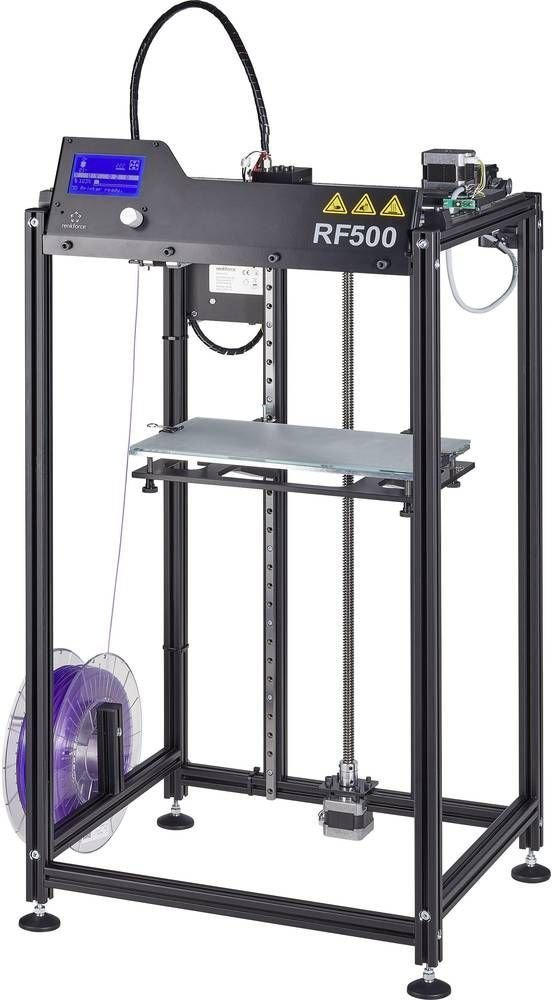 These pieces may need additional adhesion to keep it in place.
These pieces may need additional adhesion to keep it in place.
The best way to remove a 3D printed part from a taped bed is simply to wrench it loose with your hand. Do this carefully though, because applying too much force could snap your part.
You want to use this method if you can because it will preserve the quality of your tape, letting you use it again for future prints. However, if the adhesive of the tape is too strong, use these tricks to remove your printed parts safely.
Pry with a Putty Knife
After trying to wiggle the printed part free with your hand, the next course of action should be to use a putty knife to pry the piece off of the plate. If you can, slide the knife under a corner and work around the part, gently prying the piece free.
Remove the Tape
If that does not work, then the next step will be to remove the tape from the build plate. You can use your knife to make tears in the tape so you can remove it all.
Spray Isopropyl Alcohol
It is possible that the tape will tear up everywhere except for underneath the part. In this instance, you will want to spray or rub a solution made up of alcohol and water around the base of the piece. Wait a few seconds and the printed part and the tape underneath should remove easily.
Adjust the Height of the Nozzle
If your printed pieces are so hard to remove that you need to resort to removing the tape and spraying alcohol after every print, you may just need to adjust the height of the nozzle. The filament might be taking too long to cool between leaving the nozzle and contacting the plate, so it is seeping too deeply into the pores of the tape.
Start by raising the distance between the nozzle and the build plate by .1mm for your next print. Then continue raising it by this increment until you find that your parts are easy to remove but still have enough adhesion to the bed to get the job done.
When to Remove Blue Tape from a 3D Printer Bed
If you treat your blue tape carefully, you can get several weeks of use (up to 20 prints) out of a single taping.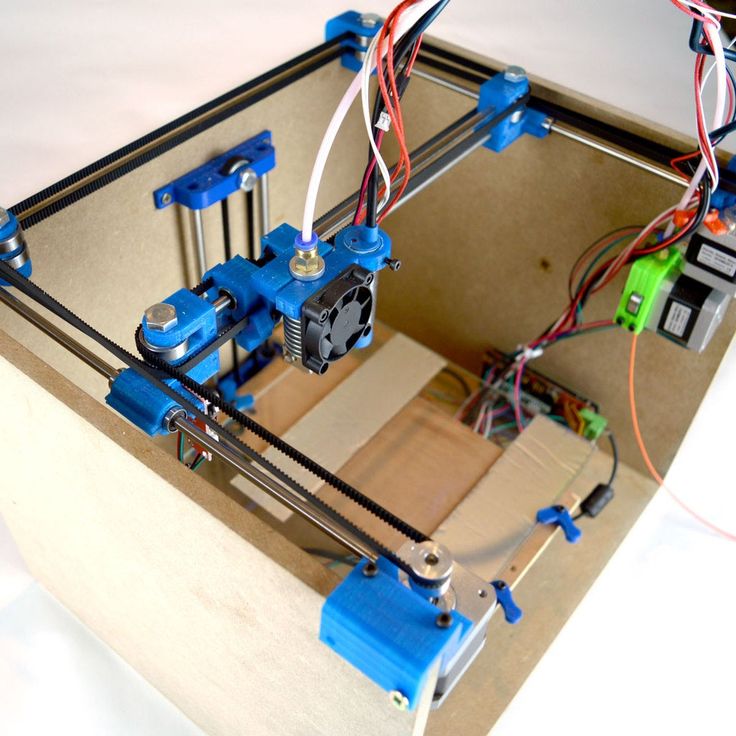 The more care you take with placing and maintaining your tape, the longer it will work for you.
The more care you take with placing and maintaining your tape, the longer it will work for you.
If you need to apply alcohol, tear up the tape, or the filament stops sticking to it, you will have to apply a fresh layer of tape to the build plate.
How to Remove Blue Tape from a 3D Printer Bed
Once you decide that it is the proper time to remove the tape, the process is as simple as unsticking it from the plate. If you have trouble getting it off in spots where parts were built, spray some alcohol and wait ten seconds. It should come off cleanly after that.
Once you have removed all of the tape, you should clean the build plate with alcohol so that there is no adhesive residue left behind. Once you have a clean build plate, you are ready to retape it to begin your next print!
Common QuestionsDoes blue painter's tape work on heated beds?
Because blue painter’s tape is heat resistant, it is able to withstand the heat generated by a heated 3D printing bed. Quality painters tape will not come loose from the bed or become misshapen from the heat.
Quality painters tape will not come loose from the bed or become misshapen from the heat.
PLA and PETG are the best filaments for sticking to blue tape. They seep into the tape, allowing for grip to take place with no extra adhesives applied. ABS will stick to blue tape if you add some sort of extra adhesive.
Can masking tape be used for 3D printing?While masking tape can be used for 3D printing, it is not nearly as effective. Even though a roll of masking tape is similarly priced to blue tape, the rolls are typically slimmer so it takes more tape to cover the build plate.
Additionally, masking tape does not remove cleanly like painters tape does, meaning you will have to work a lot harder to clean your build plate once you are done with a layer of masking tape.
Is investing in blue tape to improve bed adhesion worth it?YES! Blue painter’s tape is an extremely cheap way to get bed adhesion for your 3D prints. With other products, you need to worry about potentially damaging your bed adhesives, but a build plate can be covered with blue tape for less than a dollar.
With other products, you need to worry about potentially damaging your bed adhesives, but a build plate can be covered with blue tape for less than a dollar.
Blue tape is cheap, resilient, and simple to use. If you need a simple solution to your bed adhesion problems, blue tape could be the answer you are looking for.
Shop Blue Painter's Tape
Blue Tape for 3D Printing
- Author
- Recent Posts
Martin
Besides many test devices, Martin now has his fourth own 3D printer running and prints as a hobby for friends, family and himself. He is happy to share his experience with each new article.
Latest posts by Martin (see all)
- BQ-Hurakan vs. Ender-3 V2 Neo | Comparison, Pros & Cons - November 10, 2022
- Mouse Ears (Brim Ears) vs. Warping in 3D Printing – Guide - November 10, 2022
- Ender-5 S1 vs. Ender-5 Pro | Comparison, Specs, Pros & Cons - November 9, 2022
Disclosure: Links marked with * are Affiliate Links. I earn from qualifying purchases if you decide to make a purchase through these links – at no additional cost for you!
I earn from qualifying purchases if you decide to make a purchase through these links – at no additional cost for you!
Poor print bed adhesion is one of the most common problems in 3D printing. Blue Tape is one of the easiest methods to increase print bed adhesion.
To increase the print bed adhesion with Blue Tape, the tape is applied diagonally without bubbles, creases or overlapping areas on a previously cleaned print bed. As long as the Blue Tape remains undamaged, you can use it several times in a row.
In this article, you will learn why this method stands out from other methods such as glue or hairspray. We’ll also go step-by-step on how to best use it and how you can remove your print object at the end.
The most popular is Scotch Blue Tape from 3M*.
Scotch Blue Tape*Check Price at:
Amazon*
Table of Contents:
- 1 Print Bed Adhesion
- 1.1 When do I need more adhesion?
- 2 Methods for Improving Print Bed Adhesion
- 2.
 1 Glue sticks
1 Glue sticks - 2.2 Spray adhesive
- 2.3 PEI sheets
- 2.4 Kapton Tape
- 2.5 BuildTak
- 2.6 Blue Tape
- 2.
- 3 How to Use Blue Tape
- 3.1 Step 1: Clean the print bed
- 3.2 Step 2: Apply Blue Tape diagonally
- 3.3 Step 3: Remove bubbles
- 3.4 Step 4: Cut off excess tape
- 4 Do Not Touch the Blue Tape!
- 5 Can I use Blue Tape on Heated Print Beds?
- 6 Blue Tape Printing Bed Temperature
- 7 Rough up the Blue Tape
- 8 Detaching Print Objects from Blue Tape
- 8.1 Increase print bed temperature
- 8.2 Remove by hand
- 8.3 Use a spatula or knife
- 8.4 Peel off Blue Tape with object
- 8.5 Isopropanol
- 8.6 Increase Nozzle Distance
- 9 When to Replace Blue Tape?
- 9.1 Removing the Blue Tape from the print bed
- 10 Blue Tape Troubleshooting
- 11 Surface Quality
- 12 Conclusion
Print Bed Adhesion
Print bed adhesion ensures that your print object stays in place while you print.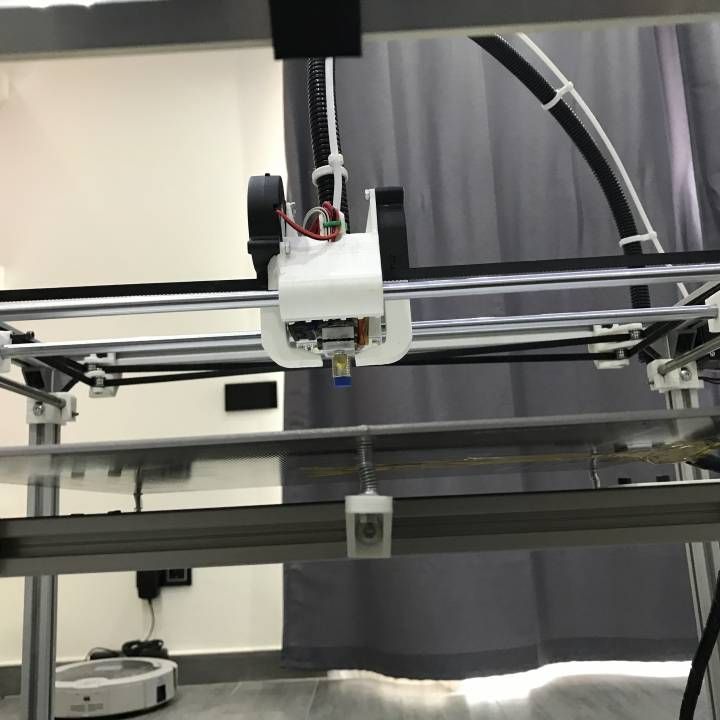 If you have good print bed adhesion, the first layers will stay exactly where you want them.
If you have good print bed adhesion, the first layers will stay exactly where you want them.
If the print bed adhesion is too poor, either the entire object can detach and your print is completely destroyed or only individual areas (usually the corners) lift off the print bed.
If the print bed adhesion is too good, you may not be able to detach your print object from the print bed. If you then try to remove the object by force, it is often destroyed.
It is therefore important to get the right balance in print bed adhesion.
When do I need more adhesion?
There are a few obvious clues when you need more adhesion on your print bed. Two of them are warping and layer shifting. It is also possible to estimate beforehand whether you should improve the print bed adhesion or not.
Warping
Warping is the phenomenon when individual parts of your print object detach from the print bed. Mostly these are protruding areas like corners.
The warping phenomenon is very annoying because it can destroy the entire print object. Increasing the print bed adhesion is an effective way to eliminate the problem.
Increasing the print bed adhesion is an effective way to eliminate the problem.
Layer Shift
In some cases of layer shifting, it can be caused by the object briefly losing its adhesion to the print bed. By increasing the print bed adhesion with Blue Tape*, for example, you can eliminate this problem.
First layer not sticking to the bed
If the first layer doesn’t adhere at all, it’s pretty obvious that you need to increase your print bed adhesion as long as you use the correct temperatures for your filament.
Often it can be sufficient to print a skirt before the actual print to stimulate the filament flow. In severe cases, you can also print a raft to create a whole new print bed on which even delicate objects adhere better. However, this is really only an emergency solution and should not be necessary if you create the right print bed adhesion.
Print object detaches during printing
If the entire print object comes off during printing, it’s also pretty obvious that you need more print bed adhesion.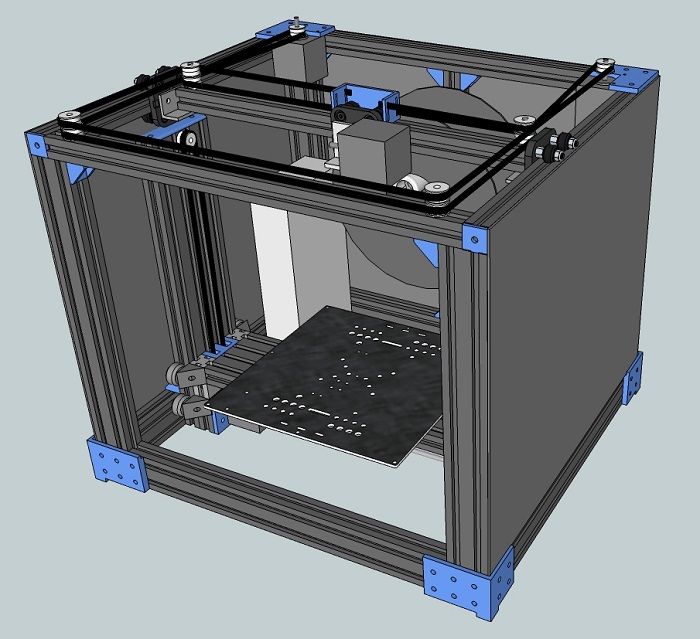
Objects with a small base
If you sometimes have sufficient print bed adhesion with your 3D printer and sometimes not, you are on a boundary where some objects will stick and some will not.
In general, objects with delicate and detailed first layers tend to suffer more from poor print bed adhesion. The surface area between the first layer and the print bed is simply too small to create a sufficiently high adhesion.
Objects with a large base
For objects with a large base, it looks already different. Especially if this base has no filigree extensions but is more like a rectangle or a circle.
You then have a raft, so to speak.
Such a high surface area provides much more print bed adhesion than small parts with less surface area.
Methods for Improving Print Bed Adhesion
Glue sticks
Glue sticks are a common way to quickly increase print bed adhesion. There are now even special glue sticks for 3D printers*.
The application is very simple: you just have to spread the glue on the print bed where you want to print.
However, there are a few disadvantages with this method:
- The print bed cleaning is complex
- The print bed may become uneven
The glue on the print bed is difficult to remove. In addition, the adhesion may be far too great and you may not be able to get the print object off at all.
In these cases, it may help to heat the print bed to soften the adhesive again.
Another issue is that irregularly applied adhesive can create an uneven print bed. If too much adhesive accumulates in one place, the nozzle could drive into it or create irregularities in the print image.
Spray adhesive
Spray adhesives* have the advantage over glue sticks that they can be applied more evenly. You just have to spray it on the printing plate and you can start printing. So it’s very easy and quick to use.
In addition, most sprays are easier to remove during cleaning than other adhesives because they are soluble in water. The disadvantage, however, is that it is not always easy to achieve uniform adhesion over the entire print bed. In addition, the print bed adhesion is not quite as strong as with other methods.
In addition, the print bed adhesion is not quite as strong as with other methods.
PEI sheets
PEI sheets* are adhesive layers that can be stuck to the print bed. Unlike an adhesive strip, the surface is one complete sticker.
With these sheets, you can also very quickly increase your print bed adhesion. However, it is often the case that the films do not last as long as promised because they are scratched or otherwise damaged very quickly.
Kapton Tape
Kapton Tape* is particularly suitable for ABS. However, it is very difficult to apply and the leveling of the print bed must be perfectly adjusted.
Unless you are printing with ABS where you have severe difficulties with warping or other effects, you should first try other methods to increase print bed adhesion.
BuildTak
A BuildTak surface* is particularly suitable for PLA, PETG and other standard filaments. Only for TPU it is not suitable.
Just like a PEI sheet, BuildTak is a large sticker that you stick on the print bed. However, the application is very easy because the surface is designed in such a way that it cannot throw bubbles.
However, the application is very easy because the surface is designed in such a way that it cannot throw bubbles.
In addition, the surface is very robust and is very difficult to damage. One could argue that the BuildTak surface is the biggest competitor to Blue Tape when printing with PLA.
Blue Tape
Blue Tape is a type of masking tape that you apply to the print bed to increase print bed adhesion.
In 3D printing language, Blue Tape usually means Scotch Blue Tape*. There are many blue painter’s tapes available, but only the Scotch Blue Tape from 3M gives you the desired adhesive effect for your print objects.
With which filaments does Blue Tape work?
Blue Tape works great with PLA, PETG and TPU. For ABS you would have to roughen the Blue Tape a bit or even use some more glue.
TPU without and with Blue TapeHow to Use Blue Tape
You might think that using Scotch Blue Tape* should be pretty easy. But why you shouldn’t just apply the tape without thinking about it will become clear in the next steps.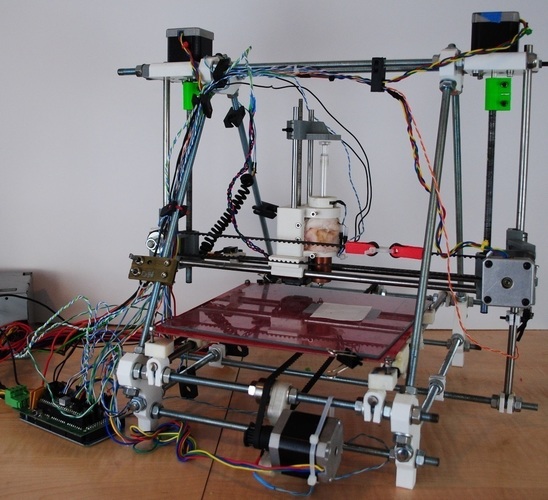
Step 1: Clean the print bed
This step applies in principle to any method of increasing print bed adhesion. In order for the Blue Tape to adhere properly to the print bed at all, the print bed must be clean:
- Dust, grease, oils and other contaminants must be removed from the print bed. All these things prevent good adhesion of the Blue Tape to the printing plate.
- Foreign bodies must be removed. This mainly refers to old filament residues on the printing plate. Since these are often difficult to remove, the spatula is usually used for this purpose.
As already mentioned, it is best to first remove coarse filament residues and dirt from the print bed with a spatula. Then you should clean the print bed thoroughly and remove all adhesive residues, grease and oil.
You can just use normal dish washing soap for this. What other options there are and what you need to consider in detail, you will learn in this detailed guide to print bed cleaning.
Step 2: Apply Blue Tape diagonally
Why diagonal?
You’re probably wondering why it’s important to apply the Blue Tape diagonally. I asked myself the same question the first time and simply ignored this tip…
After the first few prints with Blue Tape, however, I found out why it actually makes sense to apply the tape diagonally.
Since most print objects are oriented at right angles along the X and Y axes, it is often the case that their corners and edges are parallel to the X or Y axis.
If such an edge lies directly next to a gap between two adhesive strips, the print object together with the Blue Tape can lift off the print bed. This is very rare – but it can happen! And to reduce this probability, you should simply apply the tape diagonally.
Of course, you could always rotate the object in the slicer by 45 degrees…
Glue on exactly
The print bed must be level. To achieve this with Blue Tape, you must apply the individual adhesive strips exactly next to each other.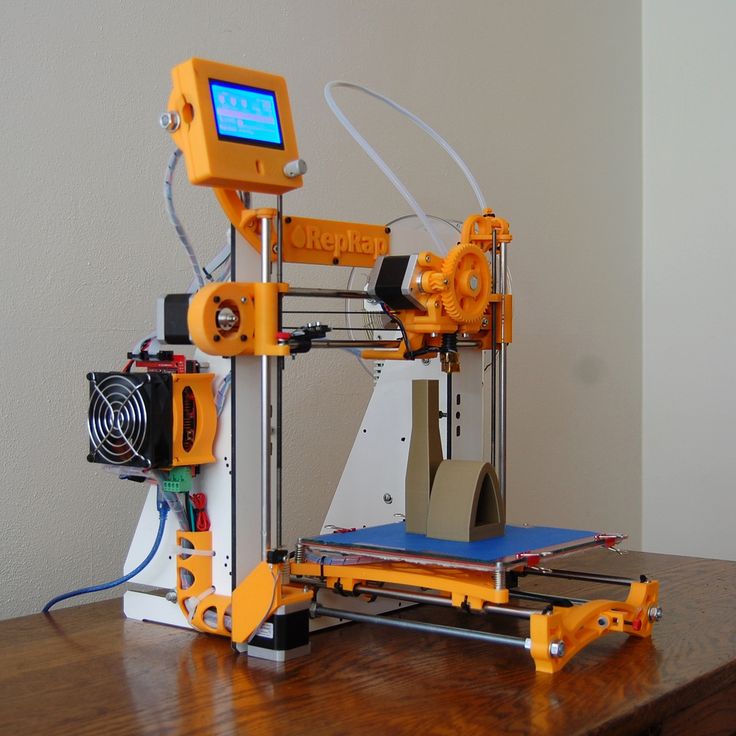 There must be no gaps or overlaps.
There must be no gaps or overlaps.
If gaps or overlaps occur, they will form directly on your print object and can destroy your print image.
Step 3: Remove bubbles
Already when applying the Blue Tape you have to make sure that no bubbles appear. If this should happen, you can try to press them out carefully.
To do this, you can carefully use a spatula or a cloth and your hand. The bubbles you can then very carefully press to the side to the edge of the adhesive strip where they disappear.
However, you must be very careful not to create any damage or kinks. As mentioned, the print bed must be even. If you have not succeeded in doing this, you must remove the adhesive strip and stick on a new one.
Step 4: Cut off excess tape
When applying the Blue Tape, you should use the entire print bed. And since you’re sticking it on diagonally, there’s always going to be some of the tape sticking out beyond the print bed.
You can simply cut this off at the end with a knife or scissors. You should not leave the excess tape or stick it under the print bed. It could get tangled up with moving parts or affect the leveling of the print bed.
You should not leave the excess tape or stick it under the print bed. It could get tangled up with moving parts or affect the leveling of the print bed.
In addition, the adhesive strip can loosen more easily over time if you dont cut it off. So better cut it off for longer durability and fewer problems.
How to use Blue Tape for 3D Printing.Do Not Touch the Blue Tape!
There is always some grease and oil on your hands. You can not avoid this even with thorough washing.
An oily surface will significantly weaken the print bed adhesion.
Therefore, you should avoid touching the Blue Tape at all costs. When applying the tape, you only need to touch the two ends of the strip and to press it firmly to the surface and remove any bubbles, you can use a cloth.
Also, when you later remove the print object from the Blue Tape, be careful not to touch it.
Can I use Blue Tape on Heated Print Beds?
Blue Tape can be used on a heatable print bed. The tape itself and the adhesive can withstand the temperatures.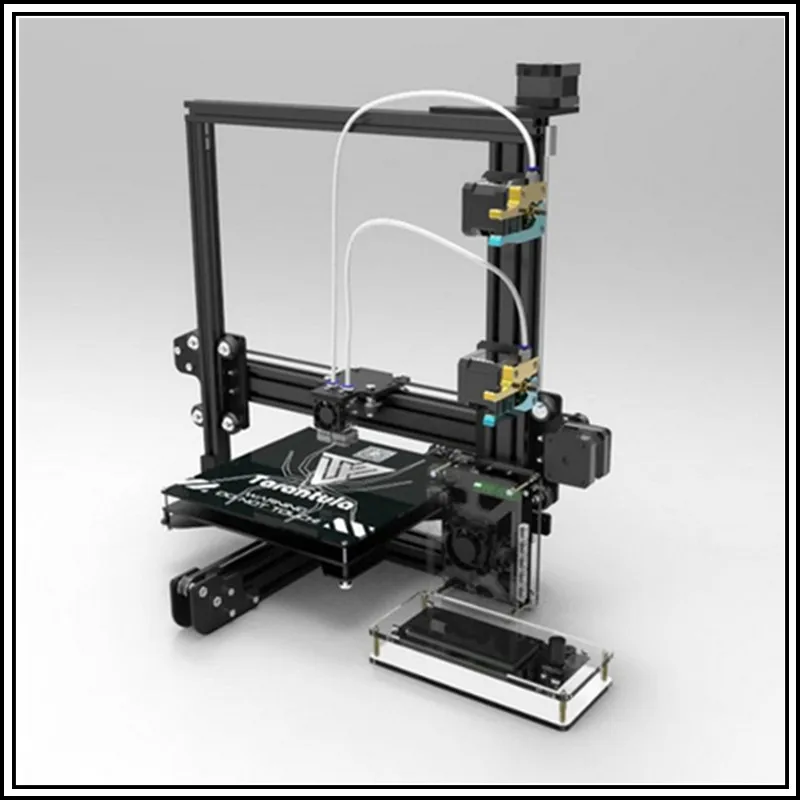
Since you can use the Blue Tape several times in a row, you will eventually notice that bubbles form after multiple uses when it cools down again. This is simply because the adhesive loses its effectiveness over time and the tape contracts when it gets cold.
However, as long as it still adheres during printing and the bubbles have disappeared when hot, you can still continue to use it.
Blue Tape Printing Bed Temperature
The print bed temperature is only slightly different from the temperature you would use without Blue Tape. Since every material is somewhat temperature insulating, it is only logical that you have to increase the temperature on the print bed a bit to get the same temperature on the first layer of the print object. However, since the Blue Tape is very thin, a few degrees are sufficient.
With some filaments like PLA, you can work with Blue Tape even without a heated print bed.
Rough up the Blue Tape
In most cases, Blue Tape is used as it is. However, you can also roughen the surface to generate even more print bed adhesion. In general, however, this is only very rarely necessary.
However, you can also roughen the surface to generate even more print bed adhesion. In general, however, this is only very rarely necessary.
As mentioned before, it can also be disadvantageous to create too good a print bed adhesion. At some point, it becomes difficult to detach the print object from the print bed. A balance between easy detachment and good print bed adhesion is therefore important.
Extra strong print bed adhesion through a roughened Blue Tape surface can be worthwhile for objects that have a high center of gravity and are not well balanced. Such objects can otherwise detach themselves when printing is already well advanced.
To roughen the Blue Tape you can use a dry sponge or a rough cloth. Rub lightly on the Blue Tape to make the surface more porous.
More pores means more surface area and more surface area means more adhesion. This way you can greatly improve the adhesive properties of the Blue Tape. The disadvantage of this method is that it also reduces the durability of the Blue Tape. The more often you rough up the same area, the thinner it becomes. At some point, you will have to replace the Blue Tape.
The more often you rough up the same area, the thinner it becomes. At some point, you will have to replace the Blue Tape.
Detaching Print Objects from Blue Tape
Increasing the print bed adhesion can also be disadvantageous. Sometimes the adhesion is so strong that you can only release the print object with difficulty at the end.
Depending on what filament you used and what the first layers of the object look like, this can be easier or harder.
Increase print bed temperature
Often, print objects can be easily detached from a print bed when the temperature of the print bed has reached room temperature again. With a glass bed, for example, this is usually the case.
This is because filaments contract again when they cool down. These tensions on the print bed mean that the print object can come loose on its own.
With Blue Tape, however, the situation is somewhat different. Due to the rough surface, this effect does not occur and it may even be more difficult to remove the print object from a cold print bed than from a warm one.
Therefore, for Blue Tape with most filaments, it is advisable to remove the print object when the print bed is hot. At high temperatures, the adhesion between the print object and the Blue Tape is not so great, as the two materials are still somewhat softer.
Remove by hand
The safest and easiest way to remove the print object from the Blue Tape is to use your hands. Especially if you follow the previous tip about the print bed temperature, this is the best way to safely remove your print object from the print bed without damaging the Blue Tape.
Depending on the form and size of your print object, you may find it easier or harder to remove it by hand. For example, if the object is very tall but has a small base, it will be easier to remove by hand than if it is very flat with a very large contact area.
To remove a print object from the Blue Tape with your hand, lift it up sideways. Make sure that you hold the Blue Tape with your other hand to prevent it from coming loose.
Use a spatula or knife
If the Blue Tape does not come off by hand, you can carefully loosen it with a spatula or a knife.
If you use a spatula, you just need to press it lightly under a corner and then use leverage to push the object up.
You can also try this with a knife or lightly peel all sides of the Blue Tape around the object and then use your hand.
The problem with these methods is that you can easily destroy the Blue Tape. As soon as you scratch the Blue Tape, you have to replace the affected strip or even the complete Blue Tape.
Such damage to the surface directly affects the result of your print object. It may even be that the first layer will no longer adhere to it.
Peel off Blue Tape with object
If it’s an object that needs to look good aesthetically, I’m usually willing to sacrifice the Blue Tape for that print and not use it again.
As soon as I notice that the object cannot be removed from the Blue Tape by hand (not even with a hot print bed), I simply tear off the complete Blue Tape with the object from the print bed.
After that, I have the print object in my hand, but the Blue Tape is still stuck to the underside. Now it is easier to remove it from the underside. Especially at the edges this should no longer be a problem and on the underside, you can carefully use tweezers or a fine knife to help to remove it.
Isopropanol
In very hard cases, the print object may adhere so well to the Blue Tape and the tape itself may also adhere extremely well to the print bed that you can’t loosen either one.
The print object sticks together with the Blue Tape rock-solid to the print bed and cannot be detached. In such cases, the Blue Tape simply tears off at the points where the print object starts and you have no chance to tear it off.
Isopropanol* can be used as a solution here.
You can spray this on the sides of the printer object or apply it lightly with a brush, which will cause the glue to dissolve and lose its effect.
You should be careful not to touch the print object itself as some filaments, like PLA, can be sensitive to isopropanol.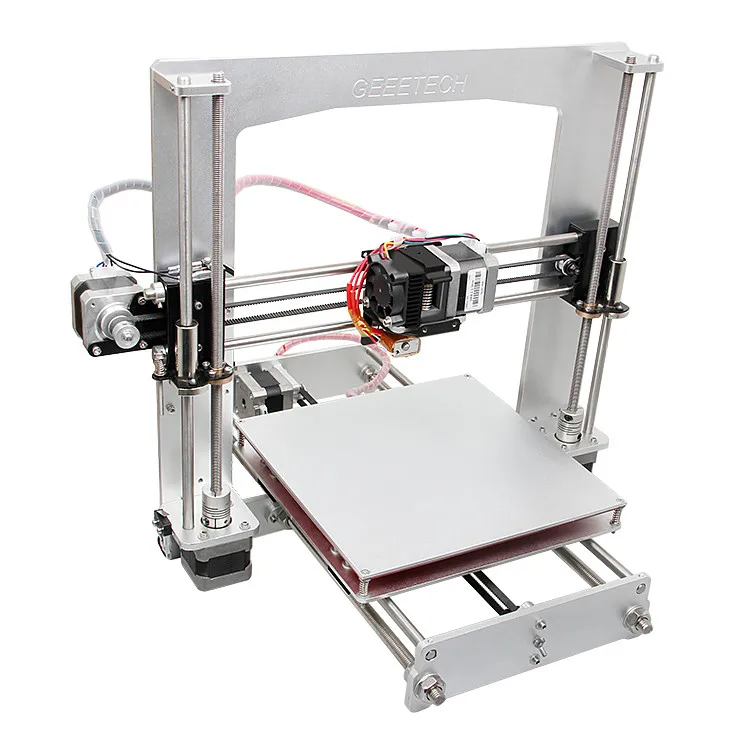
Increase Nozzle Distance
If you regularly create too much print bed adhesion with the Blue Tape, it may be useful to increase the Nozzle distance.
Especially if you’ve had to use isopropyl alcohol or regularly tear your tape, you should adjust the spacing.
Blue Tape is porous. The still liquid filament therefore bonds easily with the Blue Tape. This is how the good adhesion is created.
However, if the filament is too liquid and remains too long in the liquid state on the Blue Tape, it penetrates deeper and deeper into the tape and the adhesion becomes stronger and stronger. To reduce this, you should not reduce the temperature but the distance between the nozzle and the print bed. This way the filament has less contact with the Blue Tape and does not have as much time to penetrate the pores.
So as soon as you need isopropanol, you should try increasing the distance by 0.1 mm. If you want to reduce the adhesion in general, start with 0. 05 mm and work your way up.
05 mm and work your way up.
When to Replace Blue Tape?
Blue Tape can be used repeatedly as long as it remains undamaged. In principle, you only need to replace the Blue Tape when it is either damaged or you notice that the adhesive properties are weakening.
For me, the former is usually the case sooner. The adhesive properties really last a long time. Even if you use it so often that it becomes very fibrous on the surface, the adhesion is still excellent.
Removing the Blue Tape from the print bed
The longer you use Blue Tape, the different it will be to remove it from the print bed. On some print surfaces it will be more difficult to remove it over time and on some it will be easier.
If it gets more difficult, you may end up needing isopropyl alcohol to completely loosen it from the print bed and rid it of adhesive residue. On other surfaces, however, it is also the case that it will eventually come off by itself or bubbles start to form. Then it is quite easy to remove with bare hands.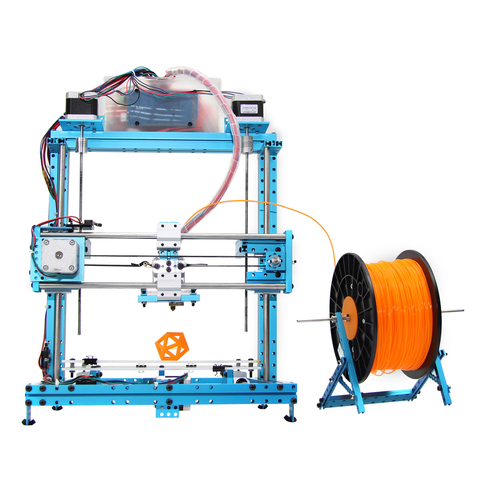
Blue Tape Troubleshooting
While Blue Tape is one of the easiest methods to optimize print bed adhesion, difficulties can still arise.
To improve print bed adhesion with Blue Tape, you can try the following:
- reduce printing speed for the first layer
- increase the nozzle temperature for the first layer (in max. 5 °C steps).
- increase the print bed temperature for the first layer (in max. 5 °C steps).
- leveling the print bed
- changing the distance between the nozzle and the print bed
- roughen Blue Tape a little
- deactivate object fan for first layer
Surface Quality
The bottom of your 3D print will not be as perfect with Blue Tape as it would be on a smooth glass print bed. The surface will be slightly matte and you can see the texture of the tape.
If some Blue Tape remains stuck to the bottom of your print, you can simply remove it carefully with your fingernail or a knife. If this happens more often, it is a sign that you should replace the Blue Tape.
The advantage of Blue Tape surface texture is that the bottom surface is no longer so different from the other surfaces of your 3D print. Often the smooth result from a glass bed is very different from the other surfaces.
However, if you want you can smooth the underside with sandpaper and even polish it to get a perfectly smooth surface.
Conclusion
Scotch Blue Tape* is one of the easiest ways to solve print bed adhesion problems.
It is suitable for many filaments, lasts for multiple prints and can significantly increase the quality of your 3D prints.
Disclosure: This website is the property of Martin Lütkemeyer and is operated by Martin Lütkemeyer. Martin Lütkemeyer is a member of the Amazon Services LLC and other Affiliate Programs. These are affiliate advertising programs designed to enable websites to earn advertising revenue through advertising and linking to Amazon.com and others. Links marked with * are affiliate links.
The model does not stick to the 3D printer table: What should I do?
Adhesion of the model to the working surface of the 3D printer table - ways to increase it
FDM 3D printing technology involves the fulfillment of a number of conditions to obtain the best printing result. One of these necessary conditions is a high adhesion rate, that is, reliable fastening of the lower printed layer of the product to the working platform of the device. In the case where the first layer does not adhere securely to the table, there is a high probability of occurrence of such troubles as deformation of the product. This is especially true of ABS plastic, in relation to the protruding parts of the product and corners.
One of these necessary conditions is a high adhesion rate, that is, reliable fastening of the lower printed layer of the product to the working platform of the device. In the case where the first layer does not adhere securely to the table, there is a high probability of occurrence of such troubles as deformation of the product. This is especially true of ABS plastic, in relation to the protruding parts of the product and corners.
Every 3D printer needs to be calibrated before printing. In this case, the height of the printed layer along the Z axis will be adjusted. Everyone knows that there should be a gap of about 50-75% of the thickness of the selected layer from the nozzle to the hot layer. Implementing this is very simple. You need to take a regular sheet of A4 office paper. The leaf density index should be 80 mg/m 3 . The nozzle should fit snugly against the table, but the sheet should pass with little effort. In this case, the calibration is considered correct. For those new to 3D printing, there are also videos illustrating proper desktop setup.
For those new to 3D printing, there are also videos illustrating proper desktop setup.
3D printers can be supplied with an aluminum or glass work platform, depending on the model. Some 3D printers prefer to print directly on the platform without using any additional tools. But in any case, there are some rules that must be followed.
Rule #1: A smooth surface must be free of dust and grease before printing. For this, isopropyl alcohol is used. If this rule is neglected, then you will definitely encounter deformation of the first printed layer, and, accordingly, the entire product will be of lower quality.
Rule #2: To improve adhesive performance, special products must be used: kapton tape, heat resistant tape, heat mat, ABS solution, garolite, borosilicate glass, 3D printing adhesive, PEI film. The choice is quite wide and you can choose the best option.
Let's take a look at the most popular options for these products in more detail .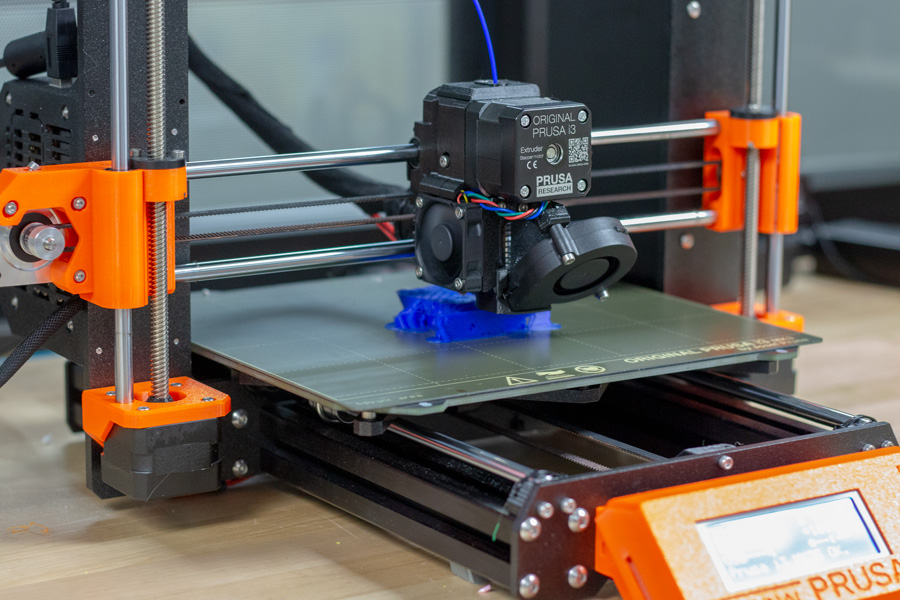 ..
..
Blue 3D printing tape or heat resistant tape
This is one of the popular options for increasing adhesion. The advantages of this material are convenience, low cost, ease of application, ease of removal of the finished product. The disadvantages include the disposability of this material, although this is not always the case.
The most popular type of heat resistant tape is blue 3D printing tape. Masking tape can be attributed to this category with a stretch.
How to use: Degrease and clean the surface of the platform before using the adhesive. The tape is glued back to back so that there are no defects on the finished product. It is necessary to make pasting the platform as evenly as possible.
Applicability: Heat Resistant Tape is recommended to improve adhesive performance when printing with filaments such as PLA, ABS, Nylon, PETG.
3D Printing Adhesive
This adhesive material is a bottle of clear liquid. The material can be used on both glass and aluminum platforms. It can also be used over masking tape or kapton.
The material can be used on both glass and aluminum platforms. It can also be used over masking tape or kapton.
The advantages of 3D printing adhesive are ease of application, low cost, compatibility with most 3D printed materials.
How to use: The adhesive was evenly applied to the degreased platform or material with a foam sponge.
Applicability: 3D printing adhesive is compatible with almost all materials. It is recommended to use it when printing with ABS plastic, ABS+, FLEX, RUBBER, PC, as well as PLA and other materials.
ABS solution
This adhesive is a solution of ABS plastic in acetone or ethyl acetate. To prepare such a solution, 15-20 cm of ABS plastic thread and 60-90 ml of ethyl acetate are used. The viscosity of the solution should be intermediate between milk and water, and the mixture should not resemble a resin or paste. This option is the most reliable, allowing to prevent deformation and bending of the corners of the product. But it will be important to maintain the correct consistency of the solution.
But it will be important to maintain the correct consistency of the solution.
How to use: The prepared mortar is applied in a thin and even layer on a degreased working platform.
Applicability: This adhesive will be most effective on ABS plastics, it is also applicable to ABS.
Kapton tape or Kapton
This material is similar to tape in many ways. Kapton tape is a golden translucent material with an adhesive layer. Kapton is made on the basis of a heat-resistant polymer. Thanks to the use of this material, the lower part of the finished product has a smooth and even glossy appearance.
Method of application: Similar to blue adhesive tape - it is necessary to paste over the working platform as evenly and end-to-end as possible, having previously degreased it.
Applicability: It is recommended to use kapton tape when working with the following types of plastics: ABS, PLA
Thermal pad
This material for increasing adhesion is one of the most popular.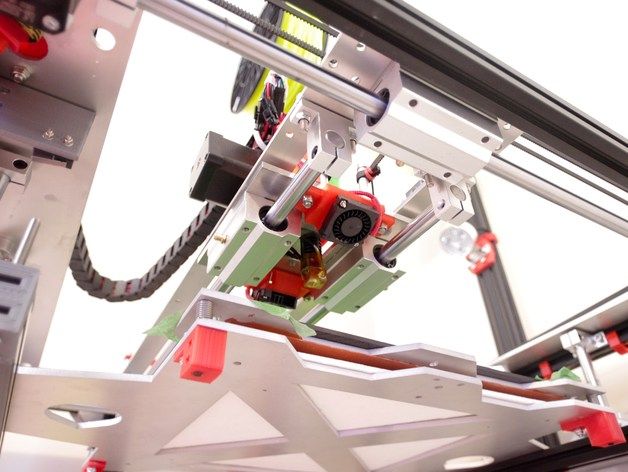 Its advantage is reusability and versatility. The use of a thermal mat allows you to achieve maximum adhesiveness of the printed product, as well as to protect the working platform itself, its surface from scratches and other damage. Thermal mat is a sheet of polymer. It can be magnetic or sticky.
Its advantage is reusability and versatility. The use of a thermal mat allows you to achieve maximum adhesiveness of the printed product, as well as to protect the working platform itself, its surface from scratches and other damage. Thermal mat is a sheet of polymer. It can be magnetic or sticky.
Method of application: If the mat has an adhesive base, then the platform must be degreased before applying it. The protective film is removed from the mat, and it is evenly glued to the platform. To improve adhesion, the platform can be preheated to about 50 degrees. Calibration of the platform is carried out after gluing the thermal mat.
Applicability: Thermal mats are universal, that is compatible with all types of filaments.
Garolith
Garolith, also known as LE sheet, is a coating based on glass fiber or epoxy resin. There are several varieties of harolith.
How to use: The sheet is applied to the printing platform.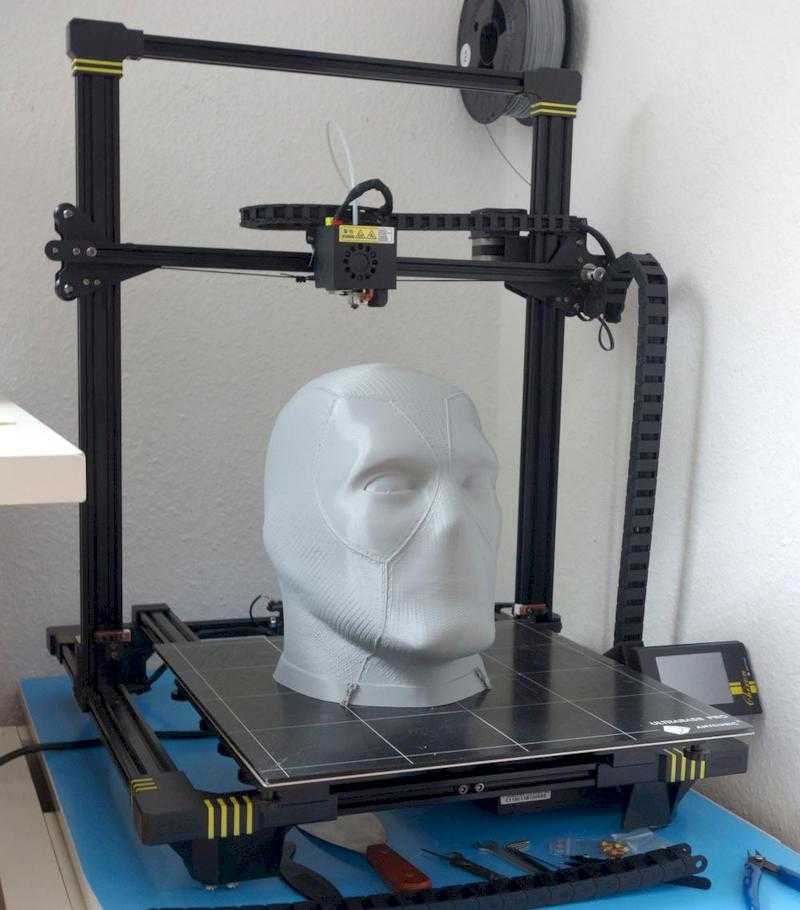
Applicability: Garolite is not a universal material. Its main purpose is to print with nylon thread, that is, it is used to achieve maximum adhesion with Nylon plastic. Sometimes it is possible to add glue to enhance adhesion, although this is usually not required at all.
PEI film
When printing on 3D printers equipped with a heated bed, PEI film is often used. This material is made of polyesterimide. There is a lot of controversy among users regarding the use of this adhesive material. Some argue that it is difficult to remove the finished product from it. Others recommend using glue to improve adhesion. But the film provides good protection against damage to the surface of the platform.
How to use: The film is fixed on the platform with paper binders (simple clips).
Applicability: PEI films are quite versatile. They can be used with filaments such as ABS, PLA, etc.
3d printer defects: errors, main problems
Causes of Defects in 3D Printing and How to Fix Them
Buying a 3D printer is only half the battle.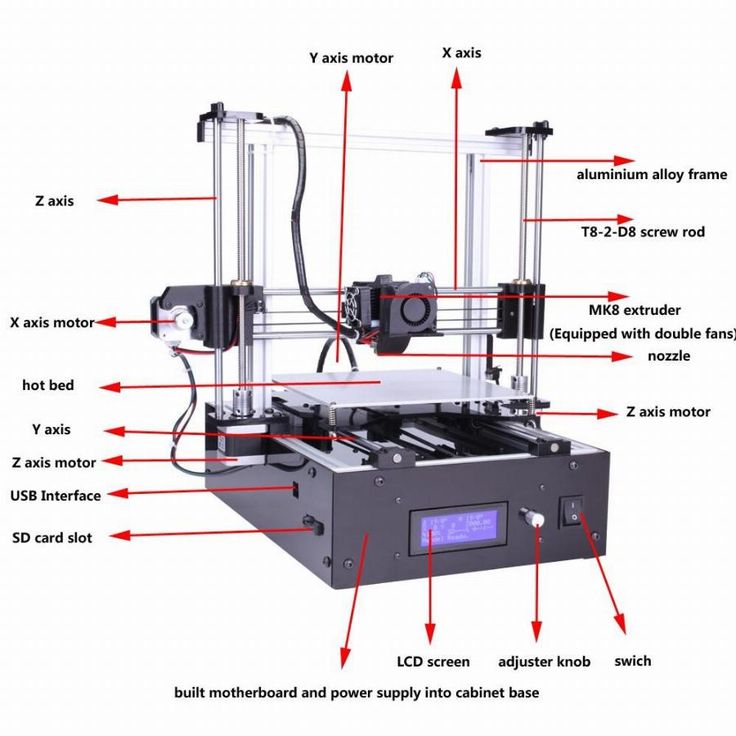 A beginner printer has a lot to go through. First, he will learn how to set up the device, calibrate the print head, set the necessary parameters, and test different types of filaments. But that's not all. The most unpleasant thing that can appear during operation is printing defects. And they need to be eliminated.
A beginner printer has a lot to go through. First, he will learn how to set up the device, calibrate the print head, set the necessary parameters, and test different types of filaments. But that's not all. The most unpleasant thing that can appear during operation is printing defects. And they need to be eliminated.
- What are 3D printing defects?
- Classification of defects
What are 3D printing defects?
After the printing process is completed, various defects can be found on the finished model. Most often they are associated with improper distribution of plastic. Defects appear for various reasons. But the main result is always the same - the model is damaged, you need to do the project on a new one. Printing defects cause downtime. Lost time and meters of filament.
Important! Within the framework of this article, defects that occur on FDM printers will be described. These are models of printing devices operating on the technology of hot deposition of plastic.
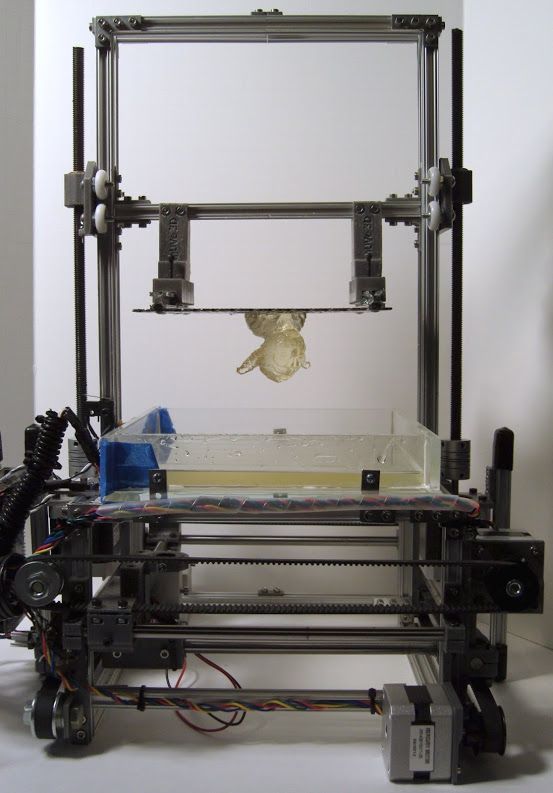
Sometimes mistakes can be seen right from the start. For example, when printing the first layer of a model. In these and other cases, it is necessary to prevent the defect in time. However, the press all the same should be stopped. But this way you can save material and time. This article will discuss the most common defects, as well as ways to eliminate them. At the end of the article, a comparative classification of faults will be given.
Layer displacement
The second name of this defect is skew. There are several options for the development of events at once. The skew can be slightly noticeable, with a slight deviation along the Z axis. The second option is a strong offset, the model is printed in pieces. In all these cases, the reason lies in the mechanical part of the printer.
Solutions:
- Check tension belts. They should be clearly in the grooves. It is not allowed to fray or stretch the belt. Sometimes it is easier to replace the entire set of belts with a new one.

- Sometimes small misalignments are caused by an incorrectly set pulley. Make a mark with a black marker before printing, after the end of the process, check the result. Calculate the difference. Tighten the problem area if necessary.
- The printer has a misaligned Y and X axes. They are not perpendicular to each other. They need to be set at 90°.
Attention! In rare cases, the problem is electrical. This option must be disassembled separately, armed with a multimeter.
The first layer does not stick
The initial layer acts as a foundation. If it "floats", then the whole model will get the wrong geometry. The second and subsequent layers may slightly shift the entire workpiece. The most unpleasant thing is that this defect can be found at the very end of the print.
Solution methods:
- Platform calibration.
 If the print bed is skewed, there is a good chance that the first layer will not stick. It is best to check platform calibration before starting printing. Many 3D printing programs help to go through this setting in a semi-automatic mode.
If the print bed is skewed, there is a good chance that the first layer will not stick. It is best to check platform calibration before starting printing. Many 3D printing programs help to go through this setting in a semi-automatic mode. - Incorrect print nozzle height. Another point worth considering. Most often, the extruder height setting is set through the printer parameters: Edit Process Settings → G-Code. They are located in the main menu of the device.
- The first layer was printed too quickly. The plastic just didn't cure. This setting must be found in the menu of the printing device. Approximate location: Settings → First Layer Speed. It is worth setting the print speed of the first layer 50% lower than the rest.
- Plastic cooling temperature. This option can be found on printers with a cold platform. The filament hits a cold surface, quickly hardens and rebounds. Here you need to experiment with the settings for the melting temperature of the filament or initially take a printer with a heated surface.
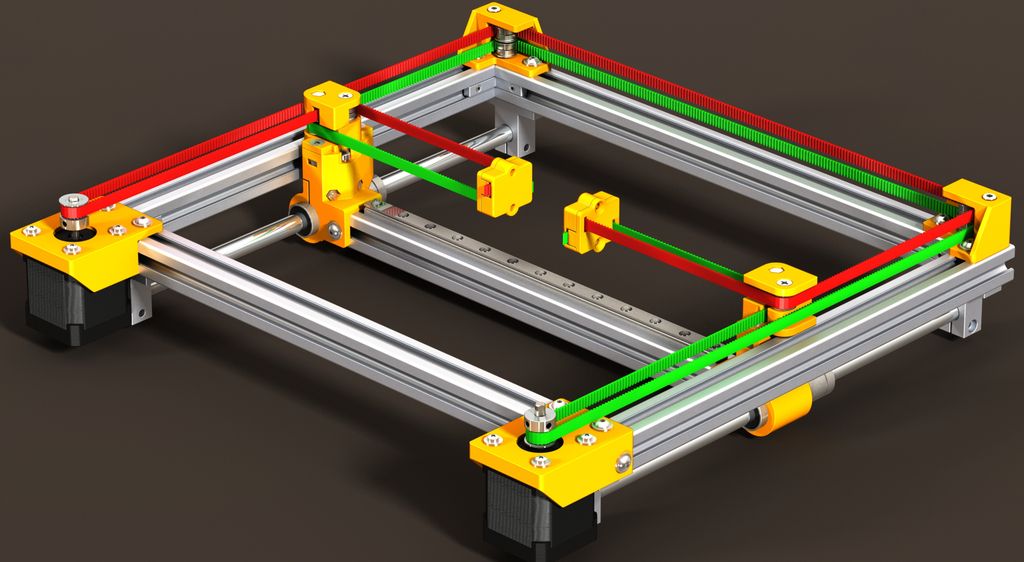
Important! Poor adhesion can be caused by covering material placed over the platform. Different glue, tape, adhesive tape - all this can repel plastic.
Pimples on the model
This also includes such defects as “snot”, swells, sagging. All these faults are of approximately the same nature. They are related to the operation of the extruder. As it moves, it should stop, then start working again. Not all devices can lay even layers without defects. This is how the irregularities described above appear.
Solving methods:
- Retract and coast setting. The first parameter is responsible for starting the extruder. In this case, you need to configure the retraction through the device menu: Edit Process Settings → Extruders. Here you need to find the parameter Extra Restart Distance. Try reducing the fill length.
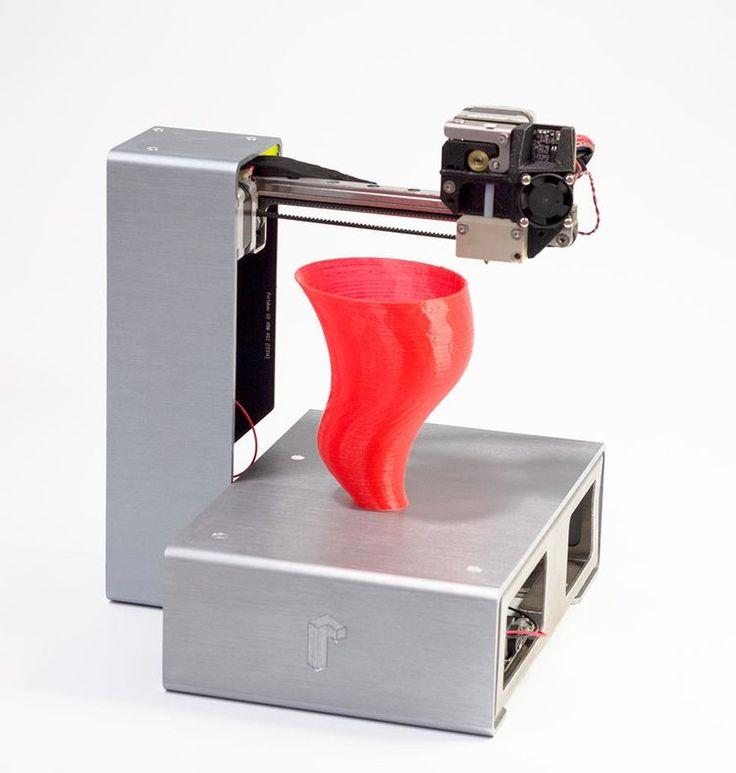 When unevenness occurs when the nozzle stops, you need to tighten the roll-on stroke (roll-up movement). This setting is referred to as Coasting. It is in the same section where the retraction is set.
When unevenness occurs when the nozzle stops, you need to tighten the roll-on stroke (roll-up movement). This setting is referred to as Coasting. It is in the same section where the retraction is set. - It's better to avoid retraction and coasting altogether. That is, the filament must be flush with the edge of the nozzle. This parameter is especially critical for Bowden printheads. Another option is to set up retraction. You need to find the Advanced tab. It contains the Ooze Control Behavior setting. This option controls filament leakage and retraction start time.
If minor defects are still present, it is worth pointing out the entry points to the printer. This setting is found in the Edit Process Settings menu on the Layer tab. For example, you can leave small flaws inside the shape, starting printing from the inner layers.
3D printer won't print
This is one of the scariest things for a beginner 3D maker. The device appears to be broken. However, in most cases this is not the case. The printer turned on, but did not start to push through the plastic? There are four reasons for this.
The device appears to be broken. However, in most cases this is not the case. The printer turned on, but did not start to push through the plastic? There are four reasons for this.
Solutions:
- Plastic does not come out of the extruder due to leakage. This can often be seen in some cheap Chinese models. The filament is preheated in the extruder, it can seep through the hot end. The same effect can be observed after the end of the work. In this case, printing starts 3–4 seconds after the start. Automatic broken geometry of the first layer. To avoid this defect, experienced printers make the so-called skirt. This is a thin circle of filament around the future model. It is printed to bring the printer to life and fill the nozzle with plastic.
- The extruder is too close to the platform. The plastic just gets stuck inside the nozzle. The situation continues on the second layer. Only by the 3rd or 4th layer does the plastic begin to come out. The solution is to adjust the Z-axis height through the G-Code command.

- Sometimes the filament is simply chewed off by the drive gear. This is the part that pushes the thread forward. If a small amount of filament shavings is visible near the printer, it is likely that the gear has worn off the filament. You need to calibrate this node.
- Clogged extruder. There may be several reasons: ordinary dirt or rubbish, plastic coked inside the extruder, poor cooling of the filament. Mechanical cleaning of the nozzle with special needles or drills will help. They are sold in specialized stores.
Important! Just do not need to clean the nozzle with a screwdriver or other improvised tools. You can completely ruin the extruder.
Prints in the air
Various users are experiencing the same problem. The reasons for printing by air are related to setting new plastic settings in the slicer. Sometimes a defect appears due to incorrect setting of the Z axis.
All solutions come down to the fact that the user needs to carefully study the G-code of the printer. Sometimes the reason lies in the lowered Z-axis height settings. You can also see the print step here, perhaps it exceeds the required parameter. In the slicer, you need to check the plastic installation parameters. View the heating temperature of the nozzle and platform. All settings must be checked manually. When importing a profile, the left parameters can be picked up.
Sometimes the reason lies in the lowered Z-axis height settings. You can also see the print step here, perhaps it exceeds the required parameter. In the slicer, you need to check the plastic installation parameters. View the heating temperature of the nozzle and platform. All settings must be checked manually. When importing a profile, the left parameters can be picked up.
Prints in reverse: how to fix
A rare defect that is not always visible at the start of printing. That is, the model comes out normal, but mirrored. Such malfunctions are often found in Chinese kits or noname devices. There are two solutions. One is simple, the other is more difficult.
Methods of solution:
- It is necessary to invert one of the axes: X or Y - it does not matter. But only one. This can be done by flipping the contacts on the power board or on the motor itself.
- Invert axis via device firmware. This method is suitable for advanced users who are familiar with programming skills.

In any case, it's better to first check all the settings in the slicer again, only then go into the electronics of the device.
Layers skipped
The finished model shows that one or more layers have been skipped. This is eloquently evidenced by the gaps in the finished model. In rare cases, this defect is associated with insufficient extrusion. Perhaps there are problems with the capture and supply of the filament. Sometimes the reason lies in the wedging of the Z axis.
Solution methods:
- Check the mechanical part of the printer. If gaps began to appear frequently, you need to arrange an unscheduled maintenance of the device. Examine all shafts. Check that they are level and not misaligned. Power off the printer, try moving the head with your fingers. If resistance is felt, then one of the shafts is not installed correctly.
- Bearing wear. This element may simply wear out. You can see that the printer vibrates slightly. There is an unusual sound when printing.
 Diagnose a breakdown in the same way as the shaft. Turn off the power and move the extruder with your hands to find the problem part.
Diagnose a breakdown in the same way as the shaft. Turn off the power and move the extruder with your hands to find the problem part.
Attention! Remember to maintain your printer regularly. Lubricate the shafts with special oil. For example, for sewing machines. Before lubricating, clean the moving parts from dirt and plastic residues. Just don't overdo the oil. A large amount of lubricant can lead to the opposite effect.
Doesn't print in the center of the bed
Some users are having trouble printing on one side of the bed instead of the center of the bed. At the same time, in the slicer, the model is clearly in the center. There may be several solutions here.
Methods of solution:
- Slicer settings are down or incorrectly set. It is necessary to change the characteristics of the kinematics. Set the Delta robot parameter instead of the Cartesian robot. You also need to set the size of the table, equal to the square inscribed in the specified print area.
 In this case, set the Origin Offset parameter to half the side of the square.
In this case, set the Origin Offset parameter to half the side of the square. - Try to adjust the position of the X-axis limit switch. In some cases, it is moved a little to the right.
What are the problems with the 3D printer test cube?
This figure is used to check the print quality. Naturally, during the test, she can clearly demonstrate where there are problems. It can be completely different defects. Most often, the test shows bulges and dents on the model.
These defects are caused by overheating and shrinkage. To find out for sure the cause and eliminate these factors, you need to print four cubes in different angles. For some ABS plastics, you need to reduce the temperature, as well as turn on the blower by 5-10%.
3D printing echo
This problem can be described as thin stripes that form when printing layer by layer. That is, the final model does not have a formed and even surface. There is waviness (echo) on the edges. This defect is also called ringing on the walls. Typically, two factors are the cause: print speed and vibration.
This defect is also called ringing on the walls. Typically, two factors are the cause: print speed and vibration.
Solutions:
- Reduce vibration. Make sure the printer is on a level and stable surface. Assess the condition of the bearings. Replace them if necessary.
- Inspect the shafts. Clean them of dirt and dust, lubricate with oil.
- Reduce the print speed through the printer settings.
Try changing the print speed first, then check the mechanics.
Interesting! Even a single loose bolt can cause strong vibrations. Check all fasteners. Pull the bolts.
Salmon leather
This defect is somewhat similar to the previous one. Only there are no obvious waves or ripples. The defect manifests itself in the form of a pattern. It is similar to the representation of heights on topographic maps or the structure of salmon skin that is drawn on the walls of the model. In English resources it is called salmon skin. The defect appears due to two reasons: vibrations and incorrect characteristics of the current coming to the motors.
In English resources it is called salmon skin. The defect appears due to two reasons: vibrations and incorrect characteristics of the current coming to the motors.
Solutions:
- Remove any vibration that may occur in the device. Tighten the bolts and check the frame geometry. You can also slightly reduce the print speed.
- Installation of a special impulse reducer (TL-Smoother) in the circuit between the driver and the axle motor. This solution balances the current indicators. The edges are more even.
Salmon skin defect is common on DRV8825 stepper motor drivers.
Ripple
In this case, we are talking about the partial impact of waves on some parts of the model. The ripples are often of the same nature as the echo. It is also tied to vibrations and the speed of the extruder. However, unlike waves, ripples are especially pronounced at sharp corners, when the nozzle abruptly changes direction.
Methods of solution:
- Reduce the print speed.
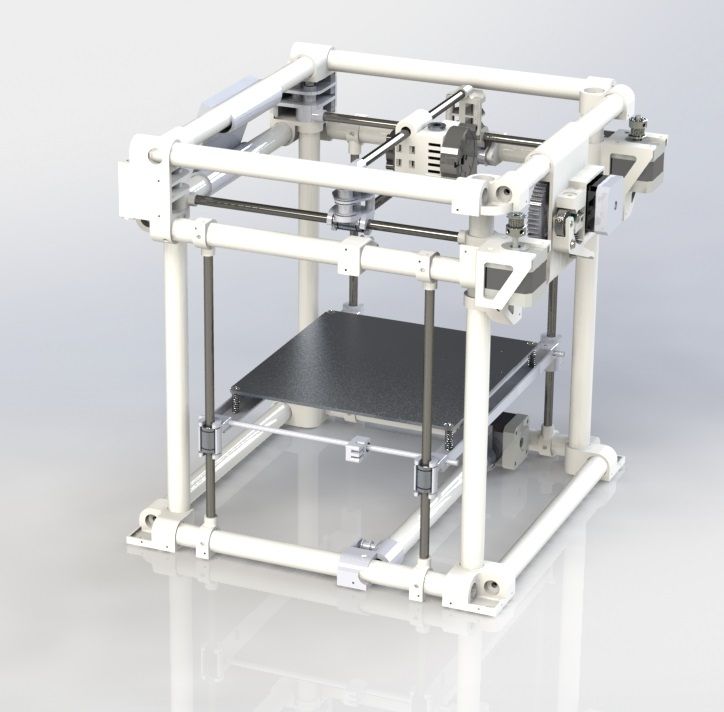 You need to find the Edit Process Settings menu in the printer settings, and then open the Other tab. Change two settings: Default Printing Speed and X/Y Axis Movement Speed. The first is responsible for the speed of all movements of the nozzle, the second - the speed in the absence of plastic supply. Sometimes the reason lies in the factory firmware. It initially indicates increased extruder acceleration.
You need to find the Edit Process Settings menu in the printer settings, and then open the Other tab. Change two settings: Default Printing Speed and X/Y Axis Movement Speed. The first is responsible for the speed of all movements of the nozzle, the second - the speed in the absence of plastic supply. Sometimes the reason lies in the factory firmware. It initially indicates increased extruder acceleration. - We remove vibrations. Check the geometry of the device, stretch all the bolts, assess the condition of the shafts and bearings. Lubricate the device if necessary.
We recommend checking the print speed settings first.
Poor filling
If the figure is not filled enough, it means that it will not receive sufficient strength. The model may simply break or crack. Usually the causes of poor coverage lie in the slicer settings or print speed settings.
Solutions:
- Try changing the fill pattern. It is indicated by the Internal Fill Pattern parameter. There are presets in the settings with complicated filling options that give more strength to the finished model: Grid, Triangular and Solid Honeycomb. The printing time will increase, but the strength will also increase.
- Reduce print speed. The fast movement of the print head results in less infill. You need to tweak this parameter through the settings of the device itself or through the slicer parameters.
- Change extrusion width parameter. Some 3D printing programs allow you to set different infill values for individual elements. For example, for the outer layers, set the size to 0.4 mm, for the inner layers - 0.8 mm. These settings can be viewed in the menu Edit Process Settings → Infill. In it you need to find the parameter Infill Extrusion Width. It is shown as a percentage. The higher the number, the thicker the layer.
Attention! When setting the Infill Extrusion Width parameter, make sure that the set value (in percent) is supported by the printing program (slicer).

Plastic is leaking from the extruder threads
This fault can be attributed to local printer failures, although they can create a number of defects in the form of "snot" on the model. Plastic oozes through various slots, flows down the extruder thread, exits the opening of the heating element. There may be several options for solving the problem.
Solutions:
- Check all screw connections. Sometimes a caked piece of plastic gets stuck between them. It creates a gap, the filament flows out.
- Clean and polish the surfaces of the thermal barrier tube and nozzle. Installing a fluoroplastic washer or winding a fum tape can also help.
- Reinforced cold drawing of threaded connections.
Attention! Sometimes the reason lies in a manufacturing defect. Nothing can be done here. Just completely change the extruder.
Plastic does not come out of the nozzle
For some reason, the printer stopped feeding filament. The device continues to make noise with the engines, but the plastic does not come out of the nozzle. There may be several reasons and solutions for this.
The device continues to make noise with the engines, but the plastic does not come out of the nozzle. There may be several reasons and solutions for this.
Solution methods:
- The plastic is out. For some printers, the filament spool is covered with a casing. Therefore, it is impossible to immediately understand that the thread is over. Check for material in the spool.
- The thread has broken. There was a gap between the hot end and the extruder. A common cause is with Bowden printheads. Perhaps the problem is with the filament itself. You need to try other material.
- Low plastic melting point set. The thick filament cannot pass through the narrow nozzle opening. Recommended temperature parameters for different types of plastic: PLA - heating t 180 °C, table heating t 60–80 °C; ABS - heating t 240 °C, table heating t 110 °C.
Interesting! Sometimes a clogged nozzle is causing the print to stop. This can happen even during work.
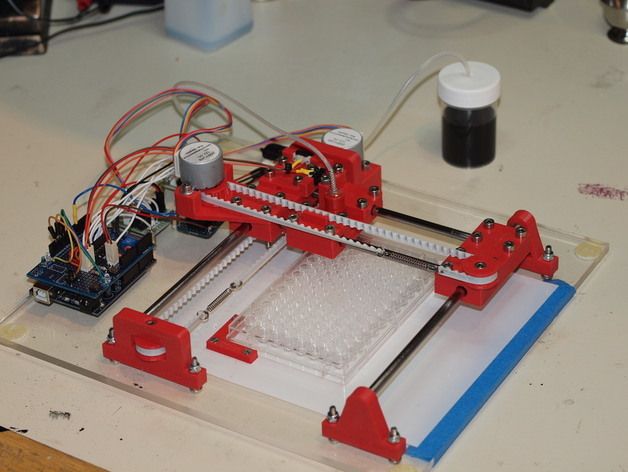
Model delamination
Visually, this defect looks like an accordion. In some places, the layers move away from each other. At the same time, it is clear that this is not a pass, but the absence of sticking of plastic. Layer separation occurs due to incorrect setting of the filament thickness or its melting temperature.
Solving methods:
- Reduce the thickness (height) of the layer. Here you need to follow the rule: the maximum layer thickness should be no more than 80% of the nozzle diameter. Otherwise, the layers will not stick to each other.
- Raise the melting point of plastic. If the height parameter is in order, then you need to look at the temperature settings. For example, the optimum melting temperature of ABS plastic is 220–240 °C, but some users set it to only 190 °C. You can increase the melting temperature in the slicer settings: Edit Process Settings → Temperature.
If standard temperatures are not suitable, try raising the setting by 10 °C. See if the adhesion of the layers improves or not.
See if the adhesion of the layers improves or not.
3D printer extruder does not heat up
At the same time, the device shows 100% heating power, the set temperature is on the display, but the extruder is cold. In most cases, the cause lies in a break in the wires or in the heating element itself. Ring all circuit elements after the controller. To cut off problems on the heating element, apply 12 V to it. It should start to heat up.
Attention! New printers may encounter a factory extruder defect. This element needs to be changed. There is no point in repairing the item.
Plastic falls in waves
Another name for this defect is “elephant foot”. In this case, the upper layers of the model are pushing against the lower parts, causing a wave effect. It sort of descends from top to bottom, forming a thick layer at the base of the model. This problem is especially common on models of printers with a heated bed.
Solution methods:
- Find the optimum temperature between heating the table and blowing the model. Lower the heating temperature in steps of 5 °C. It is important to find a balance here, when the lower layers have already gained strength, but still retain adhesive properties for the following layers.
- Calibrate the table. Try applying the default settings. If the problem persists, slightly change the Z-axis height settings. Calibrate the new settings on the test cube. This is the base shape that clearly shows how the layers are laid down.
- Chamfer the base. The option is suitable for homemade devices. You need to start with a bevel of 5 mm and 45 °, after which you can make small adjustments.
Wall gaps
Such defects can be found when printing rather thin walls in the model. For example, when the extruder nozzle prints strips up to 0.4 mm thick, and the user needs to make a 1 mm edge. In such places, cracks may appear at the joints of the two layers.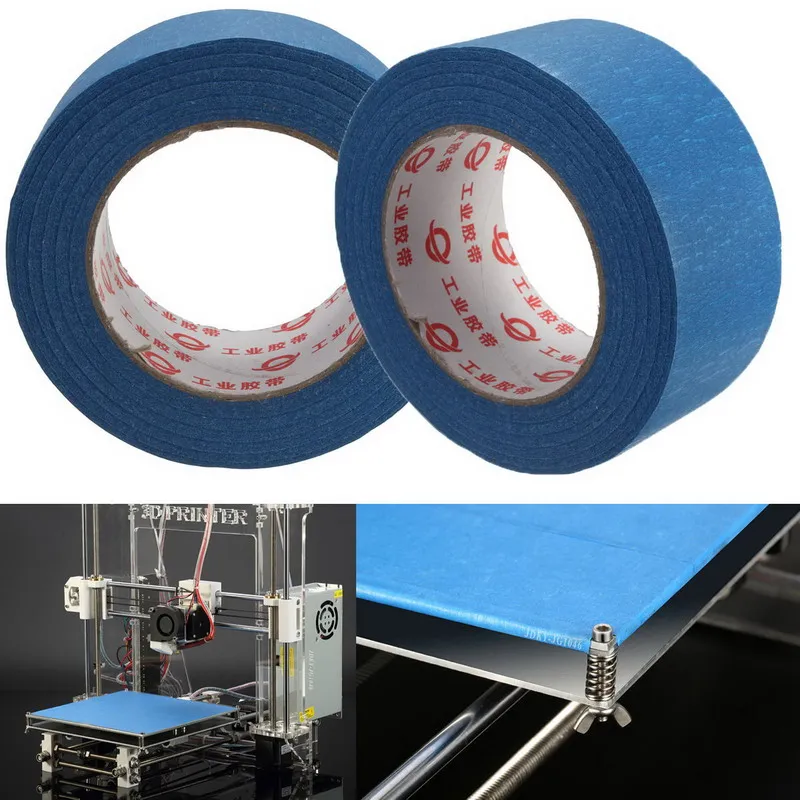 Typically, the defect is eliminated through the adjustment of the slicer.
Typically, the defect is eliminated through the adjustment of the slicer.
Solution methods:
- We need to find the setting that is responsible for the wall thickness. Usually they are in the menu: Edit Process Settings → Advanced. Here you need to find the Gap Fil parameter. He is just responsible for overlapping areas and filling the gaps between thin walls. Check the box next to Allow gap fill when necessary. There is also an alternative. Go to the Infill tab and tweak the Outline Overlap parameter.
- Simply adjust the extrusion width. Increase the parameter value if possible. The strip width can be set on the Extruders tab via the Edit Process Settings menu.
Try and experiment to get the best fit.
Web
A special case of filament leakage, when sloppy plastic threads remain between the parts. This happens for the same reasons as influxes. The solution methods are exactly the same:
- Changing the speed and distance of thread retraction.
 Full instructions are listed above.
Full instructions are listed above. - Lower print temperature. Try tweaking this setting to reduce the fluidity of the plastic. Here you need to be careful. Excessive decrease in temperature can lead to a delamination defect.
- A separate solution is to set a parameter in the slicer that launches the print head in a long and winding path over empty space. The web falls near the model without sticking to its walls. No bridge is formed between the layers. To enable this option, go to the advanced settings of the slicer (Advanced). Check the box next to the Avoid crossing outline for travel movement option.
Interesting! Some 3D makers do not consider a web defect as something serious. They simply cut off the excess filament with a knife after the print is finished.
Extruder does not feed plastic
This problem is in the filament feed mechanism. Or the nozzle is too close to the table.
Solution methods:
- Check the plastic filament.
 It may have burrs on it. The feed gear has slipped. Check the condition of the thread, you may need to tweak the gear settings a little. Or change the plastic.
It may have burrs on it. The feed gear has slipped. Check the condition of the thread, you may need to tweak the gear settings a little. Or change the plastic. - Calibrate table position. Raise the Z-axis slightly.
Sometimes the extruder won't feed plastic due to a clogged nozzle. It needs to be cleaned up.
Classification of defects
Almost all defects are one way or another related to two reasons: a malfunction of the mechanical part of the printer or incorrect software settings. Based on these parameters, it is possible to make a classification based on the most common problems in printing:
- Wear of nodes and the absence of a normal fastener feed. This parameter affects vibrations, nozzle movement trajectories.
- Poor extruder maintenance. The print head needs to be cleaned from time to time, to remove the sintered filament.
- Inaccurate (wrong) calibration of the platen and nozzle height. Another common mistake that causes a lot of print defects.
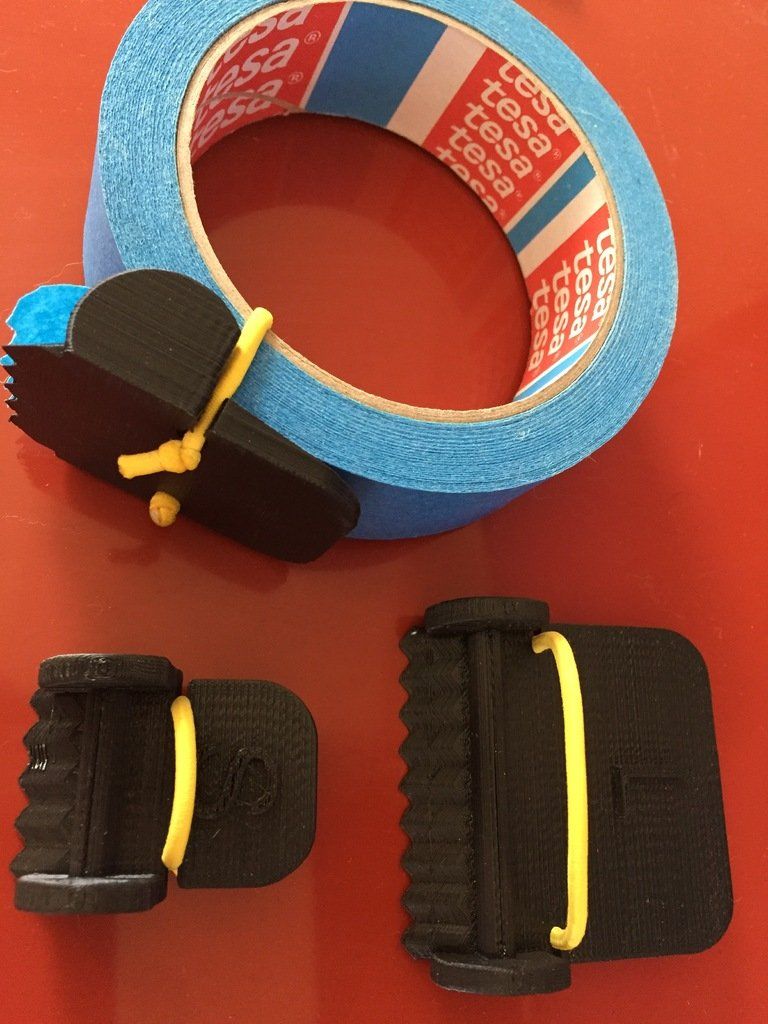
- Problems with printer settings. Most often solved through manual setting of parameters or adjustment of the G-code.
- Lost settings in the slicer. This includes: changed parameters, errors or inaccuracies in the firmware.
- Poor quality filament. The problem may lie in the quality of the plastic. It is necessary to monitor its condition, quantity. If necessary, try to replace the manufacturer, or even switch to another type of filament.
- Electrical problems. To find such a malfunction, you need to arm yourself with a multimeter and ring all the circuits after the controller.
- Factory defect. The problem is solved by replacing a low-quality part.
These are the main printer malfunctions that in one way or another affect its operation, leading to printing defects. The printer may have several problems at once. They will lead to the appearance of a group of defects. You need to be able to recognize the first signs of breakdown in time and eliminate them.